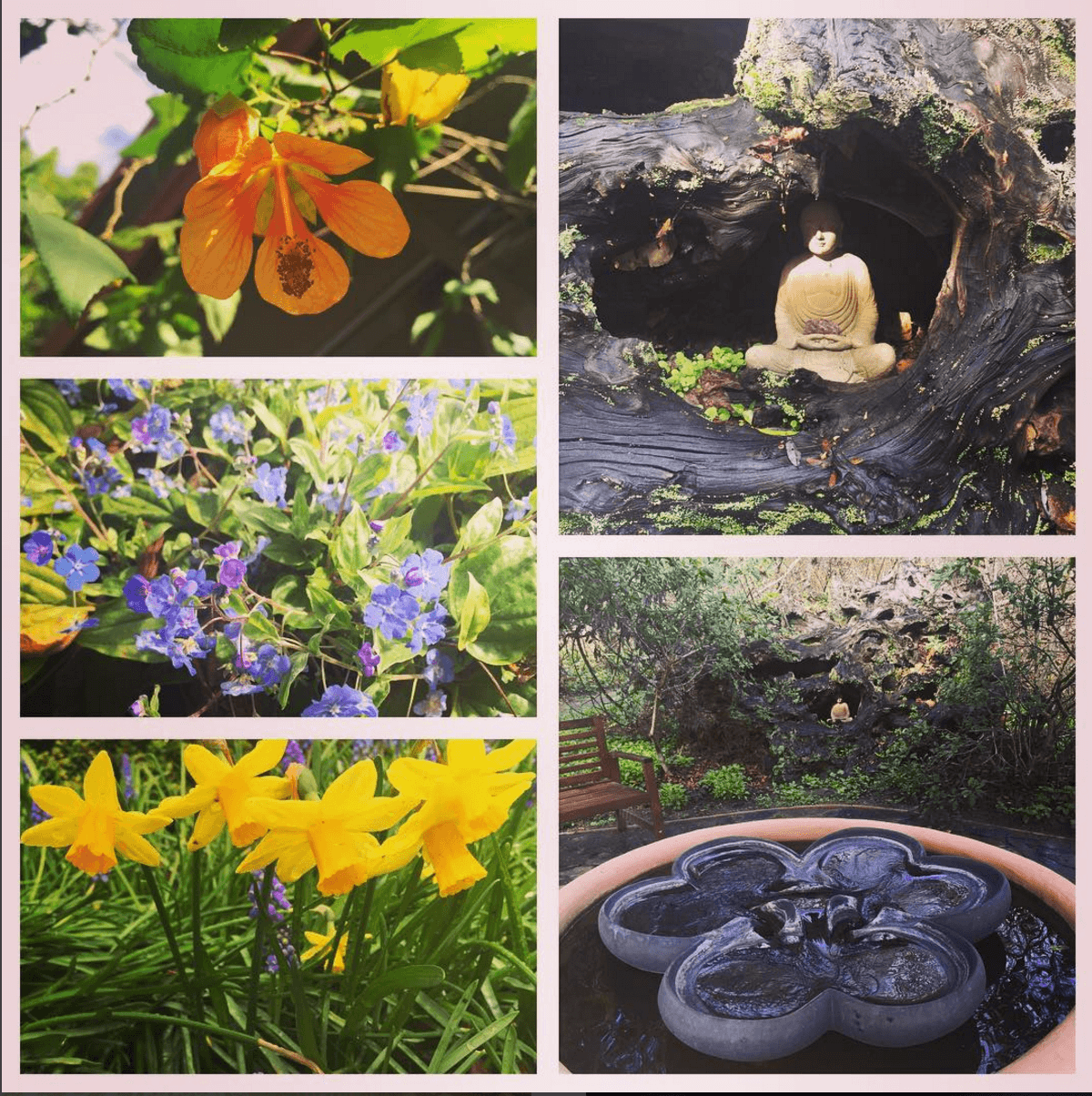Garden Journal for February 2016
by Michael Alliger
Master Pruner
Welcome to the Osmosis garden journal! We in the garden will be writing monthly installments relating our horticultural endeavors. Attention will be given to pruning; grounds maintenance, such as weeding, sweeping, raking, and insect control; planting and transplanting.
Also to be discussed will be design considerations including the specific roles of plants and their relationship to each other as well as to other elements like stone and water. This may naturally lead us to touch upon the philosophical notions informing the design.
February stirs the gardener’s soul! For it is at once both winter and spring. The leaden winter shows signs of life; crocus and muscari peek out along with snowdrop and daphne! Last year’s garden becomes this year’s garden. We still have cool temperatures and short days. The wintry rains (thank you!) continue to wash clean the pines and other conifers allowing them to glisten amongst the bare branches of deciduous trees. Yet the new buds of pines emerge. Over next few months these buds will grow into the long shoots known as candles. For now we simply watch with anticipation of what’s to come.
Around mid-month flowering trees begin to bloom. Plums are first, usually around St. Valentine’s Day, marking the end of winter pruning for them though there’s still time for cherries and crabapples as well as fruiting trees like apple, pear and persimmon that don’t bloom until March.
We know, too, that roots begin to move in February indicating the cusp of transplanting season. Emerging roots will soon bridge the gap between dug-up rootball and freshly prepared soil. Moving plants too early can result in a dormant plant sitting in cold wet unwelcoming soil. Moving too late might mean missing an opportunity to maximize a plant’s accepting it’s new home.
Grounds Care
As mentioned in January weeds abound with rain and in the Osmosis garden as with other Asian-inspired gardens we have expanses of gravel as well as paths that must be kept pristine. For control of emerging weeds we use a propane-powered torch rather than sprays. Hand pulling is out of the question for this minutiae.
Raised beds are turned and refurbished with fresh soil amendment. Mulching begun last fall continues. At Osmosis most of our fertilizing is done by keeping a healthy vibrant soil rich with worms and insect life. For this we use mulch that is nutrient balanced and rich in humus. Some specialty fertilizing (e.g. bog iris)is done as needed. Cutback of background overgrowth (e.g. willows) is completed. Irrigation supplies are inventoried and replenished in anticipation of summer use.
Please do enjoy this exciting transitional time in the garden.

